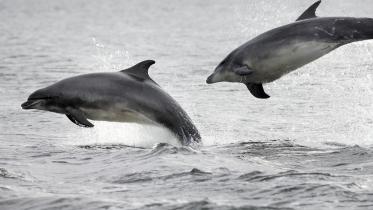NatureScot statement on modelling to support the assessment of forestry and wind farm impacts on golden eagles
Key Message
We advise that from now on, in cases where modelling is necessary for the assessment of the impacts of forestry or wind farm proposals on golden eagles, GET model assessment is recommended to support Environmental Impact Assessment Reports. PAT model assessment will only be relevant to our considerations in a very limited number of legacy cases.
Background
Good empirical data remain the main data source for identifying predicted impacts, with models used to assist in interpreting impacts where necessary.
The PAT (Predicting Aquila Territory) model has been widely used in Scotland as a standard to help identify potential impacts on golden eagles from forestry and wind farm proposals since it was developed in the early 2000s.
Recent data from satellite tagging of territory holding adult birds, underpinned by previous data from tagged, dispersing, juvenile birds (from 2007 to 2016), has greatly improved our understanding of movements and range use. The work has shown the PAT model to have key limitations that can make it’s predictions of range loss of limited value.
At the ‘Promoting Forest opportunities for raptors’ event in 2018, we hosted a discussion on a new GET model, which was being developed based on a considerable and growing data set on the movements of satellite tagged eagles. The GET model has since been published, is available from the authors and starting to be used by consultants in casework. The published model paper 'A simple topographical model to predict Golden Eagle Aquila chrysaetos space use during dispersal' is available to download.
It is our view that the GET (Golden Eagle Topographical) model is a superior model to the PAT in terms of predicting areas of significant use by territory holding golden eagles.
Next steps
Currently, more territory holding eagle satellite data are being secured to refine the GET model in terms of its predictions for territorial pairs’ range use.
We have commissioned further work from the GET model authors to support developing guidance. Autumn 2021 is likely to be the earliest that we will be in a position to publish guidance on the use of the GET model in relation to wind farm developments. Scottish Forestry is leading on publishing guidance for the GET model as applied to forestry developments, under the auspices of the Raptors and Forestry Joint Working Group (jointly chaired by NatureScot and Scottish Forestry).
Our guidance Recommended bird survey methods to inform impact assessment of onshore-windfarms will be updated shortly explaining the discontinuation of the PAT model and recommending GET.
Issued on: 13 August 2021



